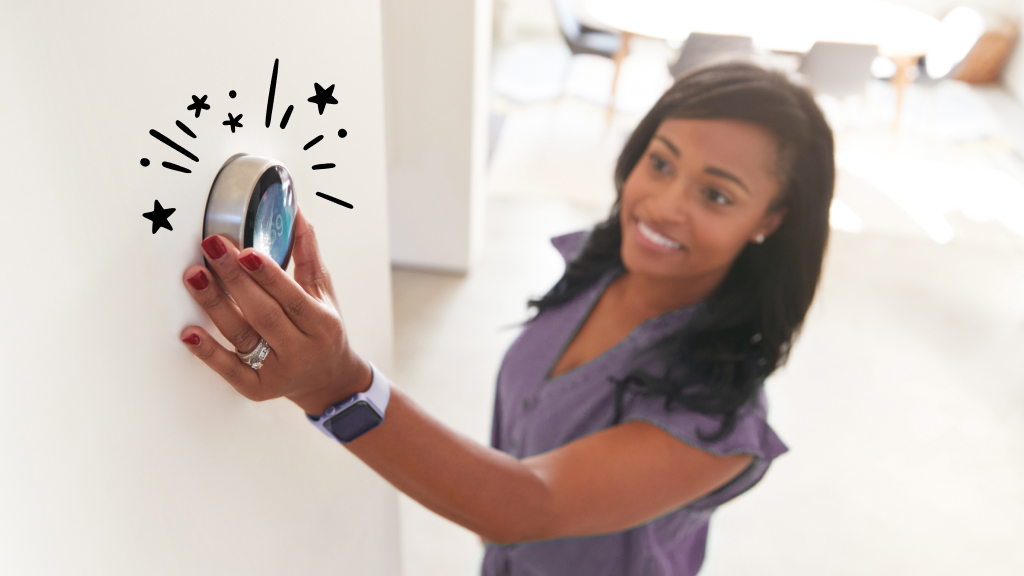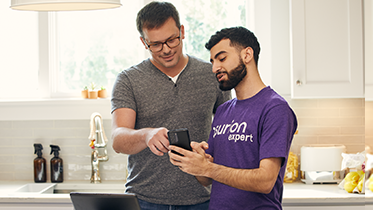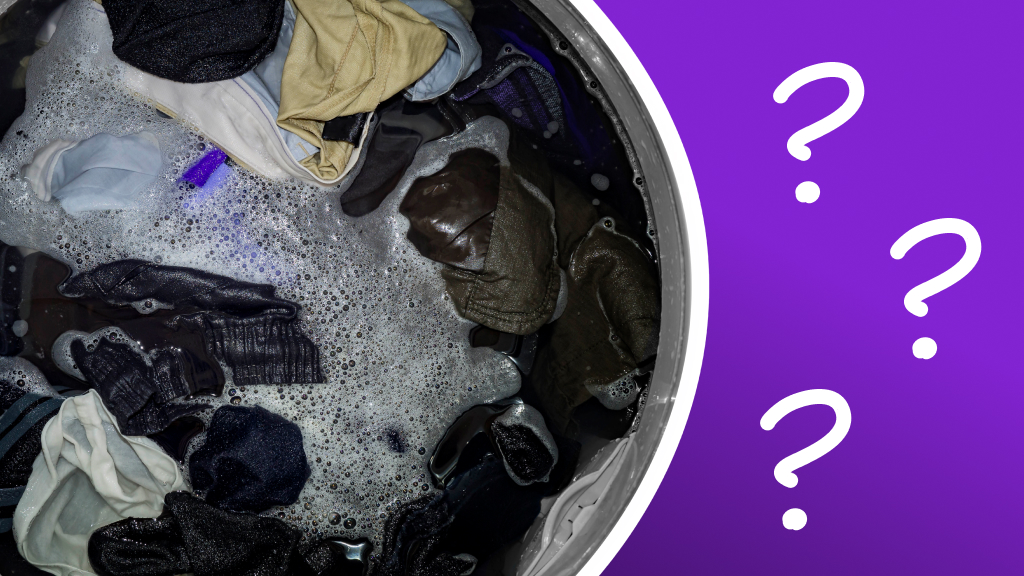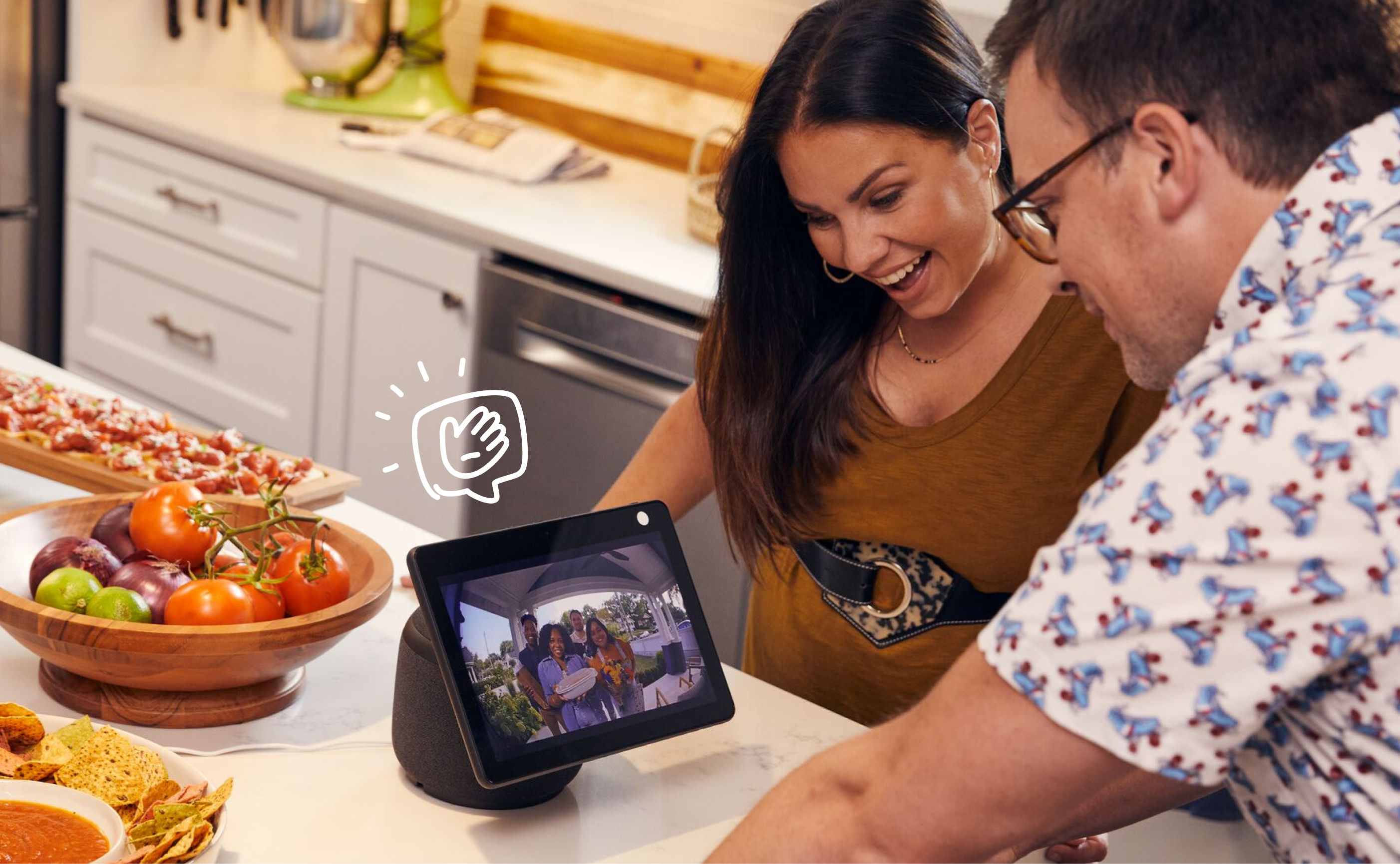A smart thermostat can help you save money and energy while also making your life more convenient. Once connected to Wi-Fi, it creates a heating and cooling plan according to your temperature preferences, daily schedule, and the weather. But how do you figure out what is the best smart thermostat for your home?
At Asurion, we not only take care of your tech but also teach you how to get the most out of it. Here's our guide to choosing the best smart thermostats.
What to consider when buying a smart thermostat
There's a lot to think about when buying a smart thermostat, from whether a device is compatible with your phone to how easy it is to install. We'll help you break it down.
Make sure the smart thermostat is compatible with your HVAC system
The first thing you'll want to do is make sure the model you're considering is compatible with your current HVAC system. For instance, if you have a zoned HVAC system or one that uses a heat pump, you may have fewer options. So check the thermostat manufacturer's compatibility guide on their website before buying anything.
Energy Star certification
When choosing a smart thermostat, look for one that's Energy Star-certified. That means it's been independently certified to help you save at least 8% of your annual heating and cooling bill (or $50 a year). Some manufacturers claim higher savings, like Nest, which says that U.S. customers saved 10–12% on their heating bills and 15% on their cooling bills (or $131 to $145 a year). Keep in mind that how much you save on your utility bills depends on where you live, how many people live with you, and what kind of heating and cooling equipment you have.
Does your current thermostat include a C wire?
Many smart thermostats require a C wire, which gives continuous power to your thermostat. It's typically blue and is labeled with a “C" underneath. If your current thermostat wiring doesn't have one, installing your smart thermostat will be tricky, and you'll likely need professional help.

How smart is your home?
Calculate your smart devices, bust common myths, and explore tips from your neighborhood tech experts.
Ease of installation
Still wondering how to know what thermostat to buy? Consider the installation process—and how difficult it is. Simple installation matters. Manufacturers describe many models as “self-install," and if you go that route, again, make sure you know what kind of HVAC system you have (gas, oil, electric, propane, forced air, radiant) and how it's wired. Also, make sure to take pictures of how your old thermostat was set up before dismantling it. If you have a complicated HVAC system and don't understand the installation instructions—or if you're not comfortable installing tech on your own—it's always a good idea to call a professional for help.
Smartphone compatibility
This next tip is handy for smart thermostats as well as smart home devices in general: Always check to be sure the model you're considering is compatible with your phone. You don't want to invest in a new gadget, only to realize it won't work with your existing tech. Make sure you can download and run the latest version of the app you need to control the smart thermostat on your mobile device—it'll make all the difference between a simple and difficult experience.
Smart home integration options
If you already use smart devices in your home, check online to see if the smart thermostat you're considering is compatible with your existing tech. You can find this information on the manufacturer's website. For instance, the Wyze™ Thermostat is compatible with Amazon Alexa™ and Google Assistant™, while the Nest™ Learning Thermostat (3rd gen) works with only IFTTT and Nest.
Temperature and motion detection sensors
Most mid- and higher-priced smart thermostats—like the Ecobee Smart Thermostat® Premium, the Nest Thermostat, and the Honeywell® Home T9 Smart Thermostat with Sensor—use sensors that detect motion, indoor temperature, and humidity to keep your climate feeling just right.
Motion detection sensors figure out which rooms are occupied and adjust to your desired temperature settings. They can also detect when a door or window is open to adjust accordingly.
A temperature sensor comes in handy when there's a room in your home that's regularly too hot or too cold. It measures the temp in that space, then sends the information to your smart thermostat, which will then raise or lower it until that room has the ideal temperature.
Convenience features
The more built-in features a smart thermostat has, the higher the price. If you're looking for lots of smart features—like an air-quality monitor, built-in speaker, microphone, and smart home ecosystem integration—a top-tier device, like the Ecobee Smart Thermostat Premium, is a great option. Ecobee offers a slightly less expensive thermostat, called the Smart Thermostat Enhanced, that has fewer features (you lose extra features like the air-quality monitor and remote sensor), but it's still a top performer.
Models that cost under $100 will let you adjust your home temperature remotely, but they're not compatible with as many devices. The Amazon Smart Thermostat® for instance, works with Alexa-enabled voice assistants, smart speakers, and smart home hubs but not Apple® Homekit® or Google Assistant.
Smart display
If you want to take advantage of convenient features like voice control with your connected thermostat, you'll want a compatible smart display, like the Google Nest Hub™ or the Amazon Echo™ Show 10. These smart home hubs act as visual dashboards, revealing all your connected devices (and their statuses). They also let you set timers and alarms, check the weather, stream online content, make video calls, control other smart devices with your own voice, and more.
Home aesthetics
Many people turn to smart thermostats because of the energy savings. But smart tech doesn't have to drag down your decor either. A lot of smart thermostats combine function with attractive design. From sharp finishes (including glass, copper, brass, and stainless steel) to sleek shapes, only you know what the right look is for your home.
Tech is expensive. Protect it all.
Protect the devices your family loves and relies on with one simple plan. With Asurion Home+®, we cover your computers, TVs, tablets, premium headphones, smart devices, and so much more—plus, 24/7 live support for your tech care needs. Learn more about Asurion Home+® coverage and how you can get peace-of-mind electronics protection.





